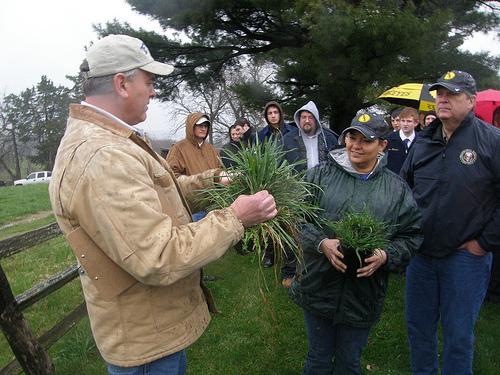No one is more accustomed to walking a tightrope of variable weather and economic fluctuations than the American farmer. However, 2020 has been especially harsh on the farm economy.
From floods and fires to trade wars and a global pandemic, the incoming administration will need to provide a swift lifeline to farmers, ranchers and forestland managers, and to Americans who depend on vital food and nutrition programs. In addition to addressing these immediate challenges, there is also an urgent need to invest in longer-term solutions that build resilience to future risks.
Fortunately, the U.S. Department of Agriculture is well positioned to be leader on climate action in ways that can also rebuild a more resilient farm economy.
The agency has a multi-billion-dollar budget for directing strategic payments to landowners who manage ecosystems with some of the greatest potential for curbing greenhouse gas emissions and minimizing climate impacts. These lands are ripe for investments in nature-based solutions that offer new revenue streams for farmers and help them better weather the challenges ahead.
President-elect Joe Biden has nominated a veteran leader for Agriculture Secretary in Tom Vilsack — a huge advantage for getting this essential work going on day one.

Former USDA Secretary Tom Vilsack talks to an Iowa farmer in 2011 about the environmental benefits of rotational grazing techniques. (Credit: USEPA).
We have no time to waste in setting America’s agricultural economy on a sustainable path. Our letter to President-elect Biden’s USDA transition team outlines several recommendations for the agency. Here are the top three priorities:
1. Help rural communities adapt to climate change.
Through expanded research and investments in conservation programs, USDA can help rural communities adapt to climate change.
Specifically, these programs should:
- Expand adoption of practices like cover crops and conservation tillage that boost the overall health and water-holding capacity of agricultural soils.
- Accelerate testing and adoption of water-saving practices like crop switching and deficit irrigation.
- Reduce emissions and community impacts from livestock production through practices like alternative manure handling and integrated crop-livestock systems.
- Manage forests to reduce the risk of catastrophic fire and optimize carbon storage potential.
- Use natural infrastructure to reduce downstream flooding and water quality issues.
2. Reduce emissions from and sequester carbon in farms, ranches and forests.
Farm, ranches and forests are both carbon sinks and sources of emissions. USDA can play an important role in maximizing sinks and minimizing emissions, thus putting our lands to work for climate action.
To do this, USDA must invest in research, data and analysis to more accurately quantify the specific climate benefits derived from activities that sequester carbon and reduce emissions in the agriculture and forestry sectors. This rigorous science is essential to achieve public support and confidence in these emerging practices and associated markets. USDA must ramp up efforts to rebuild a more resilient and equitable farm economy. Here's how they can. Share on X
3. Equitably expand revenue opportunities from nature-based solutions.
Building a resilient rural economy will require diversifying revenue streams for all farmers, ranchers and forestland managers. USDA should expand its efforts to promote revenue diversification through equal landowner access to incentives for adopting practices that sequester carbon, help manage floods and improve water quality.
This will require the department to commit to advancing resources for diversity, equity, inclusion and justice in all programs and staffing structures, and reducing the inequities in the distribution of USDA benefits and services that have plagued the agency.
We look forward to working with the future agriculture secretary to advance these priorities and others, for our nation’s farms and for our future.










2 Comments
The Green Team at my church is interested in getting involved in efforts to incentivize and promote regenerative agriculture.
Excellent article from EDF. I am glad to hear your interest Patricia in regen ag. Check out the film Kiss the Ground on Netflix which I am a EP. Lets regenerate !